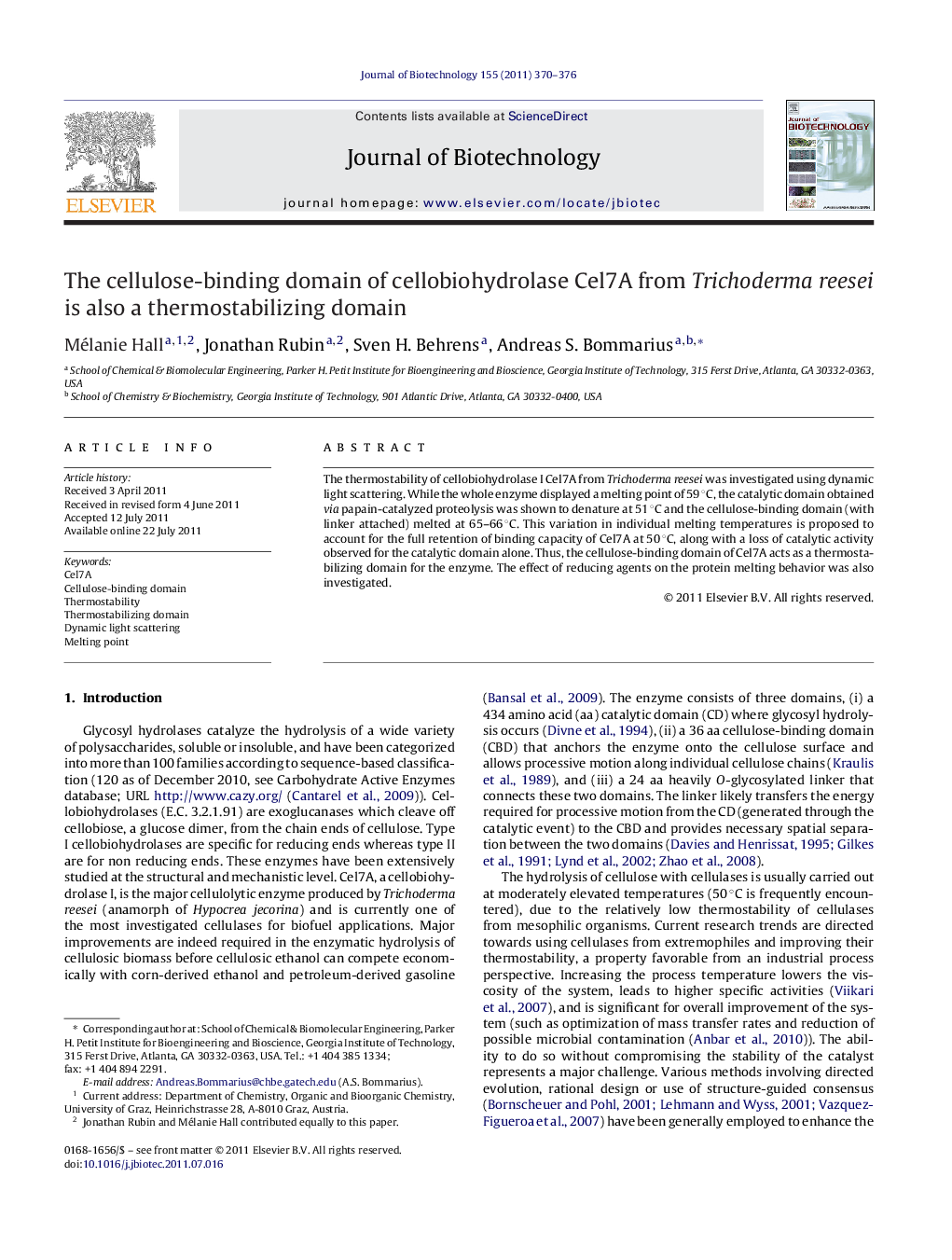| Article ID | Journal | Published Year | Pages | File Type |
|---|---|---|---|---|
| 23960 | Journal of Biotechnology | 2011 | 7 Pages |
Abstract
The thermostability of cellobiohydrolase I Cel7A from Trichoderma reesei was investigated using dynamic light scattering. While the whole enzyme displayed a melting point of 59 °C, the catalytic domain obtained via papain-catalyzed proteolysis was shown to denature at 51 °C and the cellulose-binding domain (with linker attached) melted at 65–66 °C. This variation in individual melting temperatures is proposed to account for the full retention of binding capacity of Cel7A at 50 °C, along with a loss of catalytic activity observed for the catalytic domain alone. Thus, the cellulose-binding domain of Cel7A acts as a thermostabilizing domain for the enzyme. The effect of reducing agents on the protein melting behavior was also investigated.
Related Topics
Physical Sciences and Engineering
Chemical Engineering
Bioengineering
Authors
Mélanie Hall, Jonathan Rubin, Sven H. Behrens, Andreas S. Bommarius,
